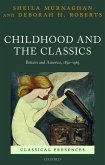John Ruskin
Selected Writings
Herausgeber: Lansdown, Richard
John Ruskin
Selected Writings
Herausgeber: Lansdown, Richard
- Broschiertes Buch
- Merkliste
- Auf die Merkliste
- Bewerten Bewerten
- Teilen
- Produkt teilen
- Produkterinnerung
- Produkterinnerung
This volume in the 21st Century Oxford Authors series offers students an authoritative, comprehensive selection of the work of John Ruskin (1819-1900). The edition represents Ruskin's extraordinary literary output, ranging from lectures, essays, and treatises to reviews, correspondence, and critical notes.
Andere Kunden interessierten sich auch für
![The Works of John Ruskin 2 Part Set: Volume 28, Fors Clavigera IV-VI The Works of John Ruskin 2 Part Set: Volume 28, Fors Clavigera IV-VI]() John RuskinThe Works of John Ruskin 2 Part Set: Volume 28, Fors Clavigera IV-VI103,99 €
John RuskinThe Works of John Ruskin 2 Part Set: Volume 28, Fors Clavigera IV-VI103,99 €![Studies in Classic American Literature Studies in Classic American Literature]() D. H. LawrenceStudies in Classic American Literature18,99 €
D. H. LawrenceStudies in Classic American Literature18,99 €![Studies in Classic American Literature Studies in Classic American Literature]() D. H. LawrenceStudies in Classic American Literature42,99 €
D. H. LawrenceStudies in Classic American Literature42,99 €![Letters of John Ruskin to Charles Eliot Norton; Volume 1 Letters of John Ruskin to Charles Eliot Norton; Volume 1]() Charles Eliot NortonLetters of John Ruskin to Charles Eliot Norton; Volume 127,99 €
Charles Eliot NortonLetters of John Ruskin to Charles Eliot Norton; Volume 127,99 €![Letters of John Ruskin to Charles Eliot Norton ..; 1 Letters of John Ruskin to Charles Eliot Norton ..; 1]() John RuskinLetters of John Ruskin to Charles Eliot Norton ..; 127,99 €
John RuskinLetters of John Ruskin to Charles Eliot Norton ..; 127,99 €![The Religion of Ruskin [microform]: the Life and Works of John Ruskin, a Biographical and Anthological Study The Religion of Ruskin [microform]: the Life and Works of John Ruskin, a Biographical and Anthological Study]() John RuskinThe Religion of Ruskin [microform]: the Life and Works of John Ruskin, a Biographical and Anthological Study28,99 €
John RuskinThe Religion of Ruskin [microform]: the Life and Works of John Ruskin, a Biographical and Anthological Study28,99 €![Childhood and the Classics Childhood and the Classics]() Sheila MurnaghanChildhood and the Classics51,99 €
Sheila MurnaghanChildhood and the Classics51,99 €-
-
-
This volume in the 21st Century Oxford Authors series offers students an authoritative, comprehensive selection of the work of John Ruskin (1819-1900). The edition represents Ruskin's extraordinary literary output, ranging from lectures, essays, and treatises to reviews, correspondence, and critical notes.
Hinweis: Dieser Artikel kann nur an eine deutsche Lieferadresse ausgeliefert werden.
Hinweis: Dieser Artikel kann nur an eine deutsche Lieferadresse ausgeliefert werden.
Produktdetails
- Produktdetails
- Verlag: Hurst & Co.
- Seitenzahl: 528
- Erscheinungstermin: 31. Oktober 2022
- Englisch
- Abmessung: 215mm x 140mm x 27mm
- Gewicht: 644g
- ISBN-13: 9780192868022
- ISBN-10: 0192868020
- Artikelnr.: 66140764
- Herstellerkennzeichnung
- Libri GmbH
- Europaallee 1
- 36244 Bad Hersfeld
- 06621 890
- Verlag: Hurst & Co.
- Seitenzahl: 528
- Erscheinungstermin: 31. Oktober 2022
- Englisch
- Abmessung: 215mm x 140mm x 27mm
- Gewicht: 644g
- ISBN-13: 9780192868022
- ISBN-10: 0192868020
- Artikelnr.: 66140764
- Herstellerkennzeichnung
- Libri GmbH
- Europaallee 1
- 36244 Bad Hersfeld
- 06621 890
Richard Lansdown is a graduate of University College London. He is the author of three books on Lord Byron, one with Cambridge, the other two with Oxford University Press, and numerous articles on nineteenth-century literature, from Austen to Ibsen and Hardy to Berlioz and Delacroix. A New Scene of Thought: Studies in Romantic Realism was published in 2016, and Literature and Truth: Imaginative Literature as a Medium for Ideas in 2018, following on from The Autonomy of Literature in 2001. He taught in Finland and Australia before moving to The Netherlands in 2017.
* Introduction
* Chronology
* Further Reading
* The Text and the Selection
* Ruskin's Artists and Architects: A Catalogue
* I. The Aesthete
* from The Poetry of Architecture; or The Architecture of the Nations
of Europe Considered in Its Association with Natural Scenery and
National Character: Chapter 6, 'The Cottage-Concluding Remarks'
(1837)
* 'Remarks on the Present State of Meteorological of Science' (1839)
* from Modern Painters, Volume I, Part II, Of Truth: Section ii., 'Of
General Truths', Chapter 2, 'Of Truth of Colour'; Section iv., 'Of
Truth of Earth', Chapter 4, 'Of the Foreground' (1843)
* from Modern Painters, Volume II, Part III, Of Ideas of Beauty:
Section i., 'Of the Theoretic Faculty', Chapter 1, 'Of the Rank and
Relations of the Theoretic Faculty'; Chapter 2, 'Of the Theoretic
Faculty as Concerned with Pleasures of Sense' (1846)
* from The Stones of Venice, Volume I, The Foundations: Chapter 1, 'The
Quarry', Chapter 30, 'The Vestibule' (1851)
* The Pre-Raphaelite Artists: To the Editor of the Times, 13 May 1851
* from The Stones of Venice, Volume II, The Sea-Stories: Chapter 4, 'St
Mark's', Chapter 6, 'The Nature of Gothic' (1853)
* from The Stones of Venice, Volume III, The Fall: Chapter 1, 'Early
Renaissance', Chapter 2, 'Roman Renaissance', Chapter 4, 'Conclusion'
(1853)
* The Light of the World: To the Editor of the Times, 5 May 1854
* from Lectures on Architecture and Painting, Delivered at Edinburgh in
November 1853: Lecture 1, 'Architecture' (1854)
* The Opening of the Crystal Palace, Considered in Some of its
Relations to the Prospects of Art (1854)
* from Modern Painters, Volume III, Part IV, Of Many Things: Chapter 4,
'Of the False Ideal:-First, Religious'; Chapter 12, 'Of the Pathetic
Fallacy' (1856)
* from Modern Painters, Volume IV, Part V, Of Mountain Beauty: Chapter
1, 'Of the Turnerian Picturesque'; Chapter 19, 'The Mountain Gloom'
(1856)
* from The Harbours of England: Chapter 1 (1856)
* from Notes on the Royal Academy: 'The Scapegoat' (1856)
* from Notes on the Royal Academy: 'A Dream of the Past' (1857)
* from The Elements of Drawing: Letter 3, 'On Colour and Composition'
(1857)
* from Notes on the Turner Gallery at Marlborough House: 'Appendix'
(1857)
* from Notes on the Royal Academy: 'Water-Colour Societies' (1859)
* from The Two Paths: Lectures on Art and its Application to Decoration
and Manufacture: Lecture 3, 'Modern Manufacture and Design'; Lecture
5, 'The Work of Iron' (1859)
* from Modern Painters, Volume V, Part IX, Of Ideas of Relation:
Section ii., 'Of Invention Spiritual': Chapter 2, 'The Lance of
Pallas'; Chapter 9, 'The Two Boyhoods'; Chapter 11, 'The Hesperid
Æglé'; Chapter 12, 'Peace' (1860)
* II. The Prophet
* from Essays on Political Economy: Part 3, 'Labour and Trade: The
Disease of Desire' (1862)
* from The Cestus of Aglaia: Chapter 4, 'Haste' (1865)
* from Sesame and Lilies: Two Lectures Delivered at Manchester in 1864
: Lecture 1, 'Of Kings' Treasuries'; Lecture 2, 'Of Queens' Gardens'
(1865)
* from The Ethics of the Dust: Ten Lectures to Little Housewives on the
Elements of Crystallisation: Lecture 6, 'Crystal Quarrels' (1865)
* from The Crown of Wild Olive: Three Lectures on Work, Traffic, and
War: Lecture 2, 'Traffic' (1866)
* from Time and Tide by Weare and Tyne: Twenty-Five Letters to a
Working Man of Sunderland on the Laws of Work: Letter 7, 'Of the
Various Expressions of National Festivity'; Letter 8, 'The Four
Possible Theories Respecting the Authority of the Bible'; Letter 9,
'The Use of Music and Dancing under the Jewish Theocracy, Compared
with their Use by the Modern French'; Letter 10, 'The Meaning and
Actual Operation of Demoniacal Influence'; Letter 11, 'The Satanic
Power is Mainly Twofold: the Power of Causing Falsehood and the Power
of Causing Pain. The Resistance is by Law of Honour and Law of
Delight' (1867)
* The Flamboyant Architecture of the Valley of the Somme (1869)
* from The Queen of the Air, Being a Study of the Greek Myths of Cloud
and Storm: Lecture 2, 'Athena Keramatis' (1869)
* III. The Activist
* from Fors Clavigera: Letters to the Workmen and Labourers of Great
Britain: Letter 5, 'The White-Thorn Blossom' (1871)
* from Fors Clavigera: Letter 11, 'The Abbot's Chapel' (1871)
* from Fors Clavigera: Letter 20, 'Benediction' (1872)
* from Love's Meinie: Lectures on Greek and English Birds: Lecture 2,
'The Swallow'; Lecture 3, 'The Chough' (1873)
* from Val D'Arno: Ten Lectures on the Tuscan Art Directly Antecedent
to the Florentine Year of Victories: Lecture 2, 'John the Pisan'
(1873)
* from Fors Clavigera: Letter 37, 'The City Which Is Our Own' (1874)
* from Fors Clavigera: Letter 41, 'Bernard the Happy' (1874)
* from Fors Clavigera: Letter 69, 'The Message of Jael-Atropos' (1876)
* 'The Extension of Railways in the Lake District: A Protest' (1876)
* from St Mark's Rest: The History of Venice for the Help of those Few
Travellers Who Still Care for Her Monuments: First Supplement, 'The
Shrine of the Slaves' (1877)
* from 'General Statement Explaining the Nature and Purposes of St
George's Guild' (1882)
* from Our Fathers Have Told Us: Sketches of the History of Christendom
for Boys and Girls Who Have Been Held at its Fonts: Part I, The Bible
of Amiens: Chapter 3, 'The Lion Tamer' (1882)
* from The Storm-Cloud of the Nineteenth Century: Lecture 2 (1884)
* from The Pleasures of England: Lectures Given in Oxford: Lecture 5,
'Protestantism: The Pleasures of Truth' (1884)
* from Praeterita: Outlines of Scenes and Thoughts Perhaps Worthy of
Memory in my Past Life, Volume I: Chapter 7, 'Papa and Mamma' (1885)
* from 'The Guild of St George: Master's Report' (1886)
* from Praeterita, Volume II: Chapter 5, 'The Simplon'; Chapter 6, 'The
Campo Santo' (1887)
* Chronology
* Further Reading
* The Text and the Selection
* Ruskin's Artists and Architects: A Catalogue
* I. The Aesthete
* from The Poetry of Architecture; or The Architecture of the Nations
of Europe Considered in Its Association with Natural Scenery and
National Character: Chapter 6, 'The Cottage-Concluding Remarks'
(1837)
* 'Remarks on the Present State of Meteorological of Science' (1839)
* from Modern Painters, Volume I, Part II, Of Truth: Section ii., 'Of
General Truths', Chapter 2, 'Of Truth of Colour'; Section iv., 'Of
Truth of Earth', Chapter 4, 'Of the Foreground' (1843)
* from Modern Painters, Volume II, Part III, Of Ideas of Beauty:
Section i., 'Of the Theoretic Faculty', Chapter 1, 'Of the Rank and
Relations of the Theoretic Faculty'; Chapter 2, 'Of the Theoretic
Faculty as Concerned with Pleasures of Sense' (1846)
* from The Stones of Venice, Volume I, The Foundations: Chapter 1, 'The
Quarry', Chapter 30, 'The Vestibule' (1851)
* The Pre-Raphaelite Artists: To the Editor of the Times, 13 May 1851
* from The Stones of Venice, Volume II, The Sea-Stories: Chapter 4, 'St
Mark's', Chapter 6, 'The Nature of Gothic' (1853)
* from The Stones of Venice, Volume III, The Fall: Chapter 1, 'Early
Renaissance', Chapter 2, 'Roman Renaissance', Chapter 4, 'Conclusion'
(1853)
* The Light of the World: To the Editor of the Times, 5 May 1854
* from Lectures on Architecture and Painting, Delivered at Edinburgh in
November 1853: Lecture 1, 'Architecture' (1854)
* The Opening of the Crystal Palace, Considered in Some of its
Relations to the Prospects of Art (1854)
* from Modern Painters, Volume III, Part IV, Of Many Things: Chapter 4,
'Of the False Ideal:-First, Religious'; Chapter 12, 'Of the Pathetic
Fallacy' (1856)
* from Modern Painters, Volume IV, Part V, Of Mountain Beauty: Chapter
1, 'Of the Turnerian Picturesque'; Chapter 19, 'The Mountain Gloom'
(1856)
* from The Harbours of England: Chapter 1 (1856)
* from Notes on the Royal Academy: 'The Scapegoat' (1856)
* from Notes on the Royal Academy: 'A Dream of the Past' (1857)
* from The Elements of Drawing: Letter 3, 'On Colour and Composition'
(1857)
* from Notes on the Turner Gallery at Marlborough House: 'Appendix'
(1857)
* from Notes on the Royal Academy: 'Water-Colour Societies' (1859)
* from The Two Paths: Lectures on Art and its Application to Decoration
and Manufacture: Lecture 3, 'Modern Manufacture and Design'; Lecture
5, 'The Work of Iron' (1859)
* from Modern Painters, Volume V, Part IX, Of Ideas of Relation:
Section ii., 'Of Invention Spiritual': Chapter 2, 'The Lance of
Pallas'; Chapter 9, 'The Two Boyhoods'; Chapter 11, 'The Hesperid
Æglé'; Chapter 12, 'Peace' (1860)
* II. The Prophet
* from Essays on Political Economy: Part 3, 'Labour and Trade: The
Disease of Desire' (1862)
* from The Cestus of Aglaia: Chapter 4, 'Haste' (1865)
* from Sesame and Lilies: Two Lectures Delivered at Manchester in 1864
: Lecture 1, 'Of Kings' Treasuries'; Lecture 2, 'Of Queens' Gardens'
(1865)
* from The Ethics of the Dust: Ten Lectures to Little Housewives on the
Elements of Crystallisation: Lecture 6, 'Crystal Quarrels' (1865)
* from The Crown of Wild Olive: Three Lectures on Work, Traffic, and
War: Lecture 2, 'Traffic' (1866)
* from Time and Tide by Weare and Tyne: Twenty-Five Letters to a
Working Man of Sunderland on the Laws of Work: Letter 7, 'Of the
Various Expressions of National Festivity'; Letter 8, 'The Four
Possible Theories Respecting the Authority of the Bible'; Letter 9,
'The Use of Music and Dancing under the Jewish Theocracy, Compared
with their Use by the Modern French'; Letter 10, 'The Meaning and
Actual Operation of Demoniacal Influence'; Letter 11, 'The Satanic
Power is Mainly Twofold: the Power of Causing Falsehood and the Power
of Causing Pain. The Resistance is by Law of Honour and Law of
Delight' (1867)
* The Flamboyant Architecture of the Valley of the Somme (1869)
* from The Queen of the Air, Being a Study of the Greek Myths of Cloud
and Storm: Lecture 2, 'Athena Keramatis' (1869)
* III. The Activist
* from Fors Clavigera: Letters to the Workmen and Labourers of Great
Britain: Letter 5, 'The White-Thorn Blossom' (1871)
* from Fors Clavigera: Letter 11, 'The Abbot's Chapel' (1871)
* from Fors Clavigera: Letter 20, 'Benediction' (1872)
* from Love's Meinie: Lectures on Greek and English Birds: Lecture 2,
'The Swallow'; Lecture 3, 'The Chough' (1873)
* from Val D'Arno: Ten Lectures on the Tuscan Art Directly Antecedent
to the Florentine Year of Victories: Lecture 2, 'John the Pisan'
(1873)
* from Fors Clavigera: Letter 37, 'The City Which Is Our Own' (1874)
* from Fors Clavigera: Letter 41, 'Bernard the Happy' (1874)
* from Fors Clavigera: Letter 69, 'The Message of Jael-Atropos' (1876)
* 'The Extension of Railways in the Lake District: A Protest' (1876)
* from St Mark's Rest: The History of Venice for the Help of those Few
Travellers Who Still Care for Her Monuments: First Supplement, 'The
Shrine of the Slaves' (1877)
* from 'General Statement Explaining the Nature and Purposes of St
George's Guild' (1882)
* from Our Fathers Have Told Us: Sketches of the History of Christendom
for Boys and Girls Who Have Been Held at its Fonts: Part I, The Bible
of Amiens: Chapter 3, 'The Lion Tamer' (1882)
* from The Storm-Cloud of the Nineteenth Century: Lecture 2 (1884)
* from The Pleasures of England: Lectures Given in Oxford: Lecture 5,
'Protestantism: The Pleasures of Truth' (1884)
* from Praeterita: Outlines of Scenes and Thoughts Perhaps Worthy of
Memory in my Past Life, Volume I: Chapter 7, 'Papa and Mamma' (1885)
* from 'The Guild of St George: Master's Report' (1886)
* from Praeterita, Volume II: Chapter 5, 'The Simplon'; Chapter 6, 'The
Campo Santo' (1887)
* Introduction
* Chronology
* Further Reading
* The Text and the Selection
* Ruskin's Artists and Architects: A Catalogue
* I. The Aesthete
* from The Poetry of Architecture; or The Architecture of the Nations
of Europe Considered in Its Association with Natural Scenery and
National Character: Chapter 6, 'The Cottage-Concluding Remarks'
(1837)
* 'Remarks on the Present State of Meteorological of Science' (1839)
* from Modern Painters, Volume I, Part II, Of Truth: Section ii., 'Of
General Truths', Chapter 2, 'Of Truth of Colour'; Section iv., 'Of
Truth of Earth', Chapter 4, 'Of the Foreground' (1843)
* from Modern Painters, Volume II, Part III, Of Ideas of Beauty:
Section i., 'Of the Theoretic Faculty', Chapter 1, 'Of the Rank and
Relations of the Theoretic Faculty'; Chapter 2, 'Of the Theoretic
Faculty as Concerned with Pleasures of Sense' (1846)
* from The Stones of Venice, Volume I, The Foundations: Chapter 1, 'The
Quarry', Chapter 30, 'The Vestibule' (1851)
* The Pre-Raphaelite Artists: To the Editor of the Times, 13 May 1851
* from The Stones of Venice, Volume II, The Sea-Stories: Chapter 4, 'St
Mark's', Chapter 6, 'The Nature of Gothic' (1853)
* from The Stones of Venice, Volume III, The Fall: Chapter 1, 'Early
Renaissance', Chapter 2, 'Roman Renaissance', Chapter 4, 'Conclusion'
(1853)
* The Light of the World: To the Editor of the Times, 5 May 1854
* from Lectures on Architecture and Painting, Delivered at Edinburgh in
November 1853: Lecture 1, 'Architecture' (1854)
* The Opening of the Crystal Palace, Considered in Some of its
Relations to the Prospects of Art (1854)
* from Modern Painters, Volume III, Part IV, Of Many Things: Chapter 4,
'Of the False Ideal:-First, Religious'; Chapter 12, 'Of the Pathetic
Fallacy' (1856)
* from Modern Painters, Volume IV, Part V, Of Mountain Beauty: Chapter
1, 'Of the Turnerian Picturesque'; Chapter 19, 'The Mountain Gloom'
(1856)
* from The Harbours of England: Chapter 1 (1856)
* from Notes on the Royal Academy: 'The Scapegoat' (1856)
* from Notes on the Royal Academy: 'A Dream of the Past' (1857)
* from The Elements of Drawing: Letter 3, 'On Colour and Composition'
(1857)
* from Notes on the Turner Gallery at Marlborough House: 'Appendix'
(1857)
* from Notes on the Royal Academy: 'Water-Colour Societies' (1859)
* from The Two Paths: Lectures on Art and its Application to Decoration
and Manufacture: Lecture 3, 'Modern Manufacture and Design'; Lecture
5, 'The Work of Iron' (1859)
* from Modern Painters, Volume V, Part IX, Of Ideas of Relation:
Section ii., 'Of Invention Spiritual': Chapter 2, 'The Lance of
Pallas'; Chapter 9, 'The Two Boyhoods'; Chapter 11, 'The Hesperid
Æglé'; Chapter 12, 'Peace' (1860)
* II. The Prophet
* from Essays on Political Economy: Part 3, 'Labour and Trade: The
Disease of Desire' (1862)
* from The Cestus of Aglaia: Chapter 4, 'Haste' (1865)
* from Sesame and Lilies: Two Lectures Delivered at Manchester in 1864
: Lecture 1, 'Of Kings' Treasuries'; Lecture 2, 'Of Queens' Gardens'
(1865)
* from The Ethics of the Dust: Ten Lectures to Little Housewives on the
Elements of Crystallisation: Lecture 6, 'Crystal Quarrels' (1865)
* from The Crown of Wild Olive: Three Lectures on Work, Traffic, and
War: Lecture 2, 'Traffic' (1866)
* from Time and Tide by Weare and Tyne: Twenty-Five Letters to a
Working Man of Sunderland on the Laws of Work: Letter 7, 'Of the
Various Expressions of National Festivity'; Letter 8, 'The Four
Possible Theories Respecting the Authority of the Bible'; Letter 9,
'The Use of Music and Dancing under the Jewish Theocracy, Compared
with their Use by the Modern French'; Letter 10, 'The Meaning and
Actual Operation of Demoniacal Influence'; Letter 11, 'The Satanic
Power is Mainly Twofold: the Power of Causing Falsehood and the Power
of Causing Pain. The Resistance is by Law of Honour and Law of
Delight' (1867)
* The Flamboyant Architecture of the Valley of the Somme (1869)
* from The Queen of the Air, Being a Study of the Greek Myths of Cloud
and Storm: Lecture 2, 'Athena Keramatis' (1869)
* III. The Activist
* from Fors Clavigera: Letters to the Workmen and Labourers of Great
Britain: Letter 5, 'The White-Thorn Blossom' (1871)
* from Fors Clavigera: Letter 11, 'The Abbot's Chapel' (1871)
* from Fors Clavigera: Letter 20, 'Benediction' (1872)
* from Love's Meinie: Lectures on Greek and English Birds: Lecture 2,
'The Swallow'; Lecture 3, 'The Chough' (1873)
* from Val D'Arno: Ten Lectures on the Tuscan Art Directly Antecedent
to the Florentine Year of Victories: Lecture 2, 'John the Pisan'
(1873)
* from Fors Clavigera: Letter 37, 'The City Which Is Our Own' (1874)
* from Fors Clavigera: Letter 41, 'Bernard the Happy' (1874)
* from Fors Clavigera: Letter 69, 'The Message of Jael-Atropos' (1876)
* 'The Extension of Railways in the Lake District: A Protest' (1876)
* from St Mark's Rest: The History of Venice for the Help of those Few
Travellers Who Still Care for Her Monuments: First Supplement, 'The
Shrine of the Slaves' (1877)
* from 'General Statement Explaining the Nature and Purposes of St
George's Guild' (1882)
* from Our Fathers Have Told Us: Sketches of the History of Christendom
for Boys and Girls Who Have Been Held at its Fonts: Part I, The Bible
of Amiens: Chapter 3, 'The Lion Tamer' (1882)
* from The Storm-Cloud of the Nineteenth Century: Lecture 2 (1884)
* from The Pleasures of England: Lectures Given in Oxford: Lecture 5,
'Protestantism: The Pleasures of Truth' (1884)
* from Praeterita: Outlines of Scenes and Thoughts Perhaps Worthy of
Memory in my Past Life, Volume I: Chapter 7, 'Papa and Mamma' (1885)
* from 'The Guild of St George: Master's Report' (1886)
* from Praeterita, Volume II: Chapter 5, 'The Simplon'; Chapter 6, 'The
Campo Santo' (1887)
* Chronology
* Further Reading
* The Text and the Selection
* Ruskin's Artists and Architects: A Catalogue
* I. The Aesthete
* from The Poetry of Architecture; or The Architecture of the Nations
of Europe Considered in Its Association with Natural Scenery and
National Character: Chapter 6, 'The Cottage-Concluding Remarks'
(1837)
* 'Remarks on the Present State of Meteorological of Science' (1839)
* from Modern Painters, Volume I, Part II, Of Truth: Section ii., 'Of
General Truths', Chapter 2, 'Of Truth of Colour'; Section iv., 'Of
Truth of Earth', Chapter 4, 'Of the Foreground' (1843)
* from Modern Painters, Volume II, Part III, Of Ideas of Beauty:
Section i., 'Of the Theoretic Faculty', Chapter 1, 'Of the Rank and
Relations of the Theoretic Faculty'; Chapter 2, 'Of the Theoretic
Faculty as Concerned with Pleasures of Sense' (1846)
* from The Stones of Venice, Volume I, The Foundations: Chapter 1, 'The
Quarry', Chapter 30, 'The Vestibule' (1851)
* The Pre-Raphaelite Artists: To the Editor of the Times, 13 May 1851
* from The Stones of Venice, Volume II, The Sea-Stories: Chapter 4, 'St
Mark's', Chapter 6, 'The Nature of Gothic' (1853)
* from The Stones of Venice, Volume III, The Fall: Chapter 1, 'Early
Renaissance', Chapter 2, 'Roman Renaissance', Chapter 4, 'Conclusion'
(1853)
* The Light of the World: To the Editor of the Times, 5 May 1854
* from Lectures on Architecture and Painting, Delivered at Edinburgh in
November 1853: Lecture 1, 'Architecture' (1854)
* The Opening of the Crystal Palace, Considered in Some of its
Relations to the Prospects of Art (1854)
* from Modern Painters, Volume III, Part IV, Of Many Things: Chapter 4,
'Of the False Ideal:-First, Religious'; Chapter 12, 'Of the Pathetic
Fallacy' (1856)
* from Modern Painters, Volume IV, Part V, Of Mountain Beauty: Chapter
1, 'Of the Turnerian Picturesque'; Chapter 19, 'The Mountain Gloom'
(1856)
* from The Harbours of England: Chapter 1 (1856)
* from Notes on the Royal Academy: 'The Scapegoat' (1856)
* from Notes on the Royal Academy: 'A Dream of the Past' (1857)
* from The Elements of Drawing: Letter 3, 'On Colour and Composition'
(1857)
* from Notes on the Turner Gallery at Marlborough House: 'Appendix'
(1857)
* from Notes on the Royal Academy: 'Water-Colour Societies' (1859)
* from The Two Paths: Lectures on Art and its Application to Decoration
and Manufacture: Lecture 3, 'Modern Manufacture and Design'; Lecture
5, 'The Work of Iron' (1859)
* from Modern Painters, Volume V, Part IX, Of Ideas of Relation:
Section ii., 'Of Invention Spiritual': Chapter 2, 'The Lance of
Pallas'; Chapter 9, 'The Two Boyhoods'; Chapter 11, 'The Hesperid
Æglé'; Chapter 12, 'Peace' (1860)
* II. The Prophet
* from Essays on Political Economy: Part 3, 'Labour and Trade: The
Disease of Desire' (1862)
* from The Cestus of Aglaia: Chapter 4, 'Haste' (1865)
* from Sesame and Lilies: Two Lectures Delivered at Manchester in 1864
: Lecture 1, 'Of Kings' Treasuries'; Lecture 2, 'Of Queens' Gardens'
(1865)
* from The Ethics of the Dust: Ten Lectures to Little Housewives on the
Elements of Crystallisation: Lecture 6, 'Crystal Quarrels' (1865)
* from The Crown of Wild Olive: Three Lectures on Work, Traffic, and
War: Lecture 2, 'Traffic' (1866)
* from Time and Tide by Weare and Tyne: Twenty-Five Letters to a
Working Man of Sunderland on the Laws of Work: Letter 7, 'Of the
Various Expressions of National Festivity'; Letter 8, 'The Four
Possible Theories Respecting the Authority of the Bible'; Letter 9,
'The Use of Music and Dancing under the Jewish Theocracy, Compared
with their Use by the Modern French'; Letter 10, 'The Meaning and
Actual Operation of Demoniacal Influence'; Letter 11, 'The Satanic
Power is Mainly Twofold: the Power of Causing Falsehood and the Power
of Causing Pain. The Resistance is by Law of Honour and Law of
Delight' (1867)
* The Flamboyant Architecture of the Valley of the Somme (1869)
* from The Queen of the Air, Being a Study of the Greek Myths of Cloud
and Storm: Lecture 2, 'Athena Keramatis' (1869)
* III. The Activist
* from Fors Clavigera: Letters to the Workmen and Labourers of Great
Britain: Letter 5, 'The White-Thorn Blossom' (1871)
* from Fors Clavigera: Letter 11, 'The Abbot's Chapel' (1871)
* from Fors Clavigera: Letter 20, 'Benediction' (1872)
* from Love's Meinie: Lectures on Greek and English Birds: Lecture 2,
'The Swallow'; Lecture 3, 'The Chough' (1873)
* from Val D'Arno: Ten Lectures on the Tuscan Art Directly Antecedent
to the Florentine Year of Victories: Lecture 2, 'John the Pisan'
(1873)
* from Fors Clavigera: Letter 37, 'The City Which Is Our Own' (1874)
* from Fors Clavigera: Letter 41, 'Bernard the Happy' (1874)
* from Fors Clavigera: Letter 69, 'The Message of Jael-Atropos' (1876)
* 'The Extension of Railways in the Lake District: A Protest' (1876)
* from St Mark's Rest: The History of Venice for the Help of those Few
Travellers Who Still Care for Her Monuments: First Supplement, 'The
Shrine of the Slaves' (1877)
* from 'General Statement Explaining the Nature and Purposes of St
George's Guild' (1882)
* from Our Fathers Have Told Us: Sketches of the History of Christendom
for Boys and Girls Who Have Been Held at its Fonts: Part I, The Bible
of Amiens: Chapter 3, 'The Lion Tamer' (1882)
* from The Storm-Cloud of the Nineteenth Century: Lecture 2 (1884)
* from The Pleasures of England: Lectures Given in Oxford: Lecture 5,
'Protestantism: The Pleasures of Truth' (1884)
* from Praeterita: Outlines of Scenes and Thoughts Perhaps Worthy of
Memory in my Past Life, Volume I: Chapter 7, 'Papa and Mamma' (1885)
* from 'The Guild of St George: Master's Report' (1886)
* from Praeterita, Volume II: Chapter 5, 'The Simplon'; Chapter 6, 'The
Campo Santo' (1887)

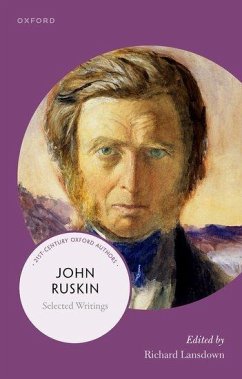
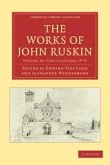
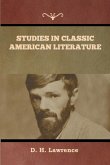
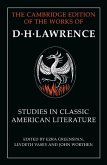
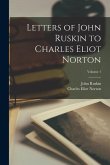
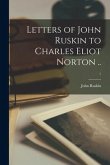
![The Religion of Ruskin [microform]: the Life and Works of John Ruskin, a Biographical and Anthological Study The Religion of Ruskin [microform]: the Life and Works of John Ruskin, a Biographical and Anthological Study](https://bilder.buecher.de/produkte/65/65559/65559079m.jpg)
